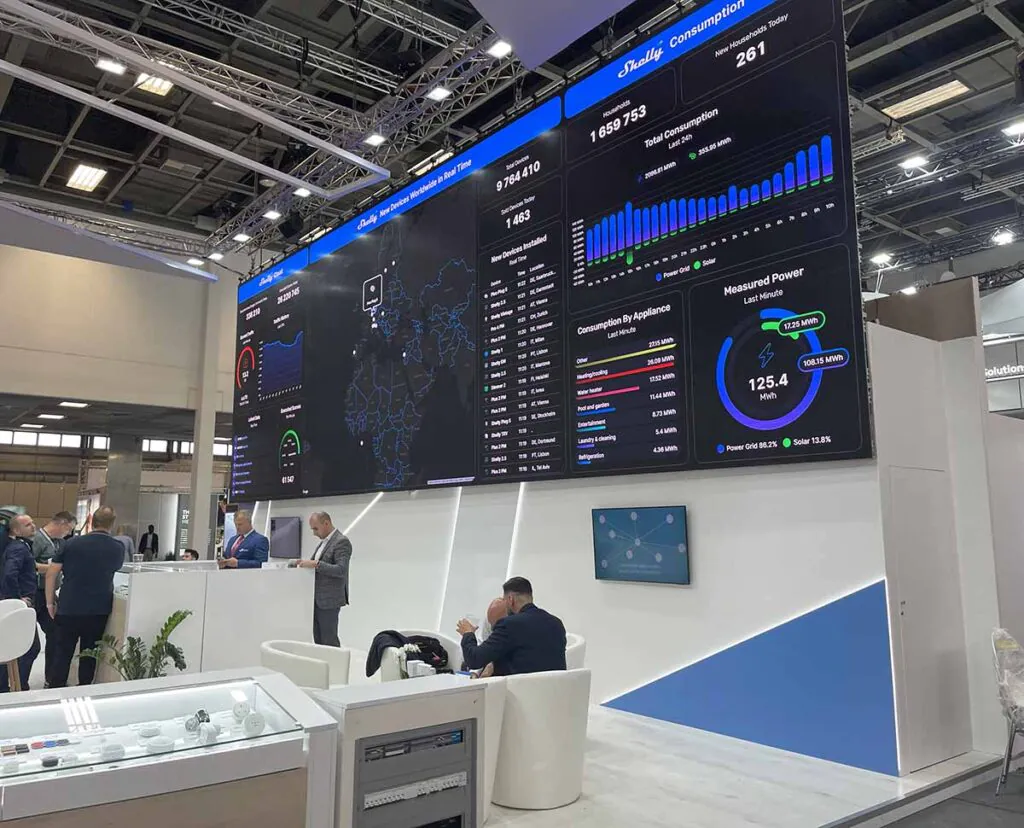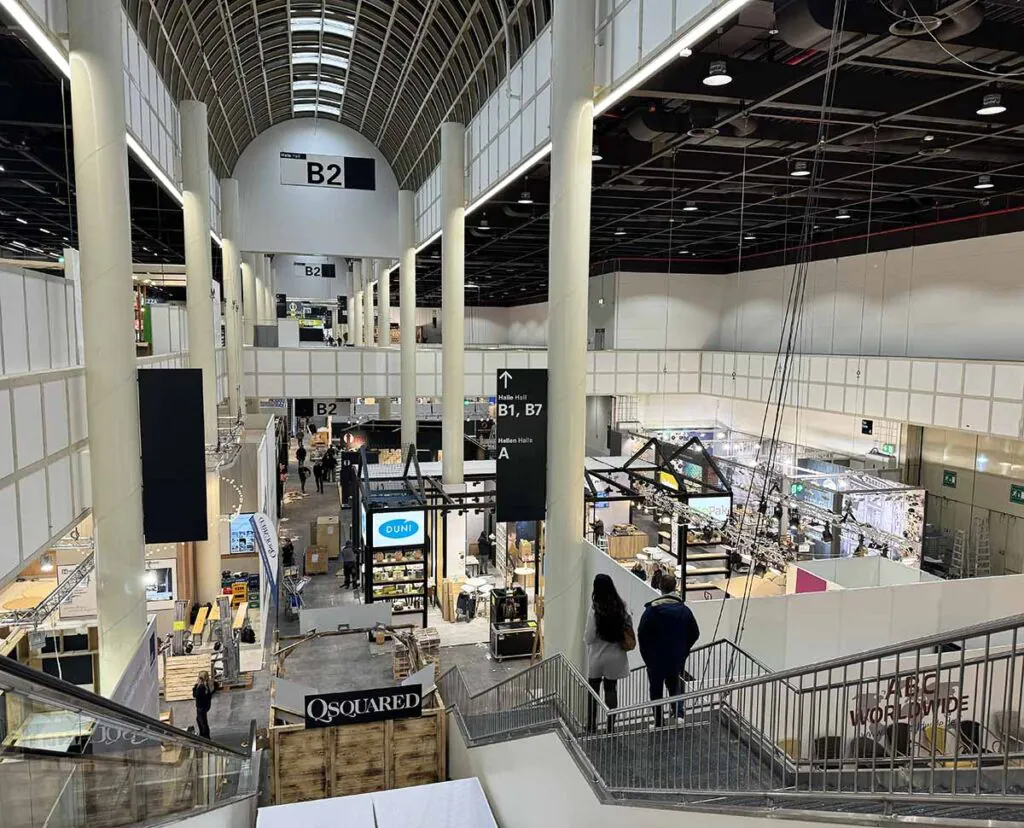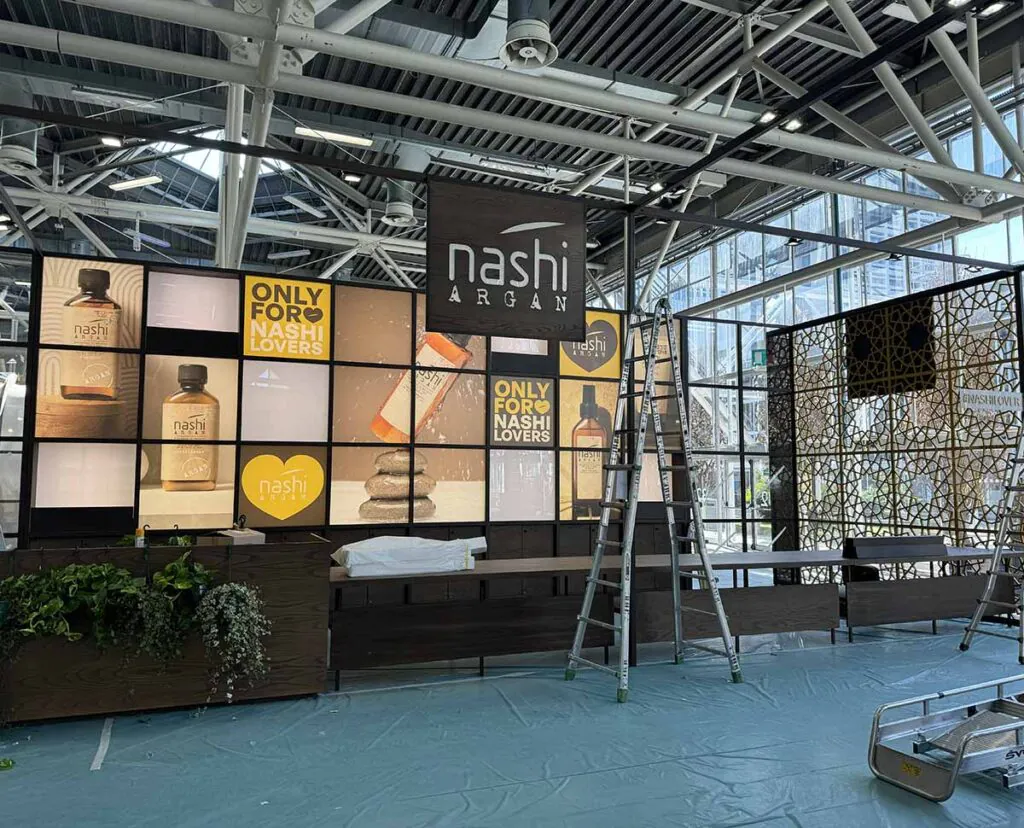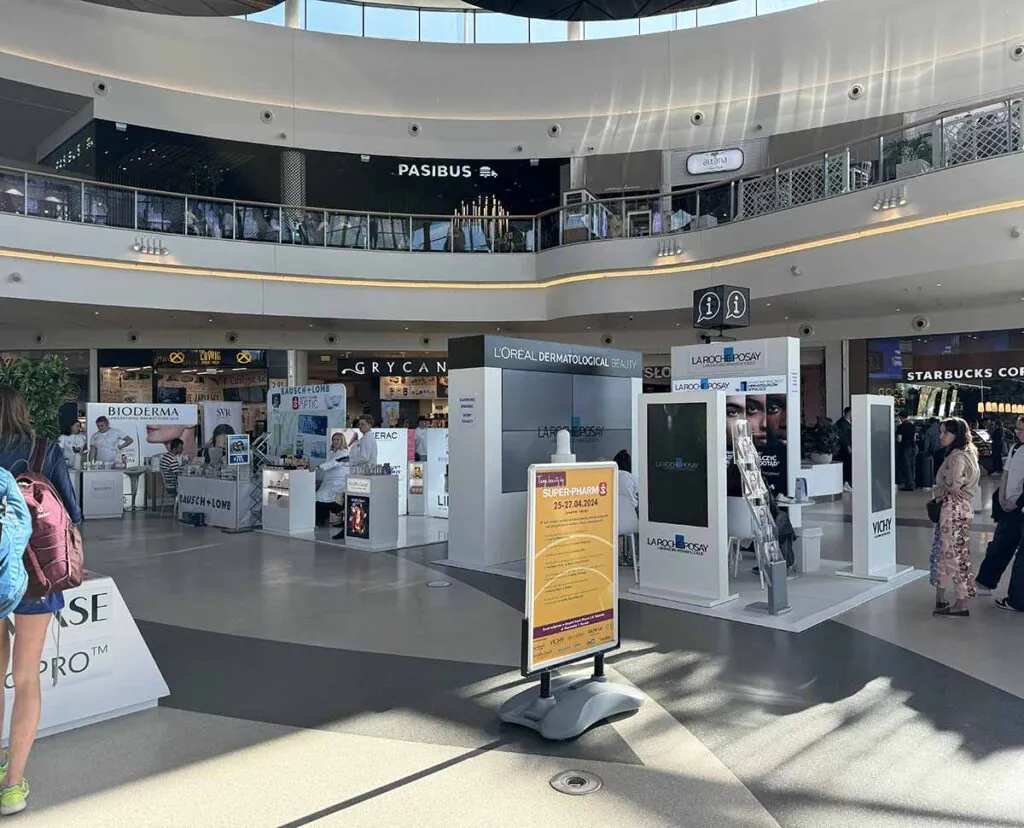For many European companies, the U.S. market feels like both an opportunity and a puzzle: enormous potential, but with different business habits, expectations, and buying behavior. One of the most effective ways to
“enter the room” — quite literally — is to show up at major American trade shows. These events are more than simply marketing tools; they help the economy grow. CEIR says that exhibitions in the U.S. have a direct impact of more than $15.6 billion per year.
That scale alone explains why so many European brands are now looking west.
Why European Brands Should Exhibit in the US

Most European companies underestimate just how large and diverse the American B2B event scene is. Once you step into it, you understand why many call it a market of its own.
Scale and Diversity of the US Exhibition Market
With 13,000+ exhibitions held annually (CEIR), the United States easily hosts some of the biggest conventions in the world. CES, IMTS, SEMA — these names carry real commercial weight.
Every industry you can think of has its flagship event on U.S. soil, and many have multiple competing ones. That variety gives European companies the flexibility to start where they fit best.
Networking Opportunities
What makes U.S. events especially attractive is the decision-maker density. Exhibit Surveys reports that 81% of American trade show attendees have the power to approve or influence purchases.
That number is considerably higher than at many European fairs, where a big portion of visitors simply explore.
Cultural & Brand Expansion
American buyers have a long-standing appreciation for European product quality, craftsmanship, and design. Deloitte’s research highlights how U.S. consumers and professionals often associate European brands with innovation and reliability.
If your company positions itself as premium in Europe, that identity often translates naturally in the United States.
Understanding the US Exhibition Landscape
Big fairs need big buildings — and the U.S. certainly delivers. Understanding where shows are held helps you plan logistics, booth construction, and staffing.
The Biggest Convention Centers in the US
The three biggest convention centers in the US dominate the market:
- Las Vegas Convention Center (LVCC) — 2.3 million sq ft of exhibit space
- McCormick Place (Chicago) — 2.6 million sq ft, the largest in the country
- Orange County Convention Center (Orlando) — 2.1 million sq ft
These halls host some of the biggest trade shows in the us, along with internationally recognized popular conventions. Their infrastructure is designed for heavy machinery, oversized exhibition stands, shipping crates, and complex rigging.
Facilities, Logistics & Location Advantages
These popular conventions offer:
- nearby freight handling and marshaling yards
- on-site storage
- union-managed electrical and rigging teams
- generous building height for tall structures
- strong AV support.
As a European stand builder, I’d add one practical note: American rigging teams are fast, but labor rules differ dramatically from Europe. Planning ahead saves money and stress.
Top Trade Shows and Conventions in the US

Below is a sector-by-sector breakdown, focusing on exhibitions that have proven valuable for European brands in biggest conventions of America.
Technology and Innovation
CES (Las Vegas)
A global giant. With 130,000+ attendees and thousands of exhibitors, CES remains one of the biggest conventions in the US. If you’re in tech — no matter how niche — CES puts you on the same floor as the majors.
TechCrunch Disrupt (San Francisco)
The show where a lot of European startups pitch their first US investors.
NAB Show (Las Vegas)
One of the top trade shows for content creation, production technology, and digital broadcasting. Annual attendance: 65,000+.
Manufacturing and Industrial
IMTS (Chicago)
If your brand works with automation, precision engineering, CNC machinery, robotics, or advanced manufacturing — this is your show. IMTS is one of the largest trade shows in the US, hosting 86,000+ buyers.
PACK EXPO (Las Vegas / Chicago)
PACK EXPO brings together everything from robotic packaging to sustainable materials. 30,000+ attendees visit the Las Vegas edition alone.
FABTECH (Atlanta / Chicago)
North America’s biggest welding and metal forming event — 48,000+ attendees.
These industrial shows are also among the largest trade shows globally for B2B manufacturing.
Lifestyle and Design
NY NOW (New York)
A must-attend for home décor, gifts, and lifestyle brands. The organizers report that 65% of buyers place orders on the spot, which is high even for American standards.
Outdoor Retailer (Salt Lake City)
The top fair for outdoor gear, apparel, and material innovation.
High Point Market (North Carolina)
One of the biggest conventions in U.S. furniture and interiors, drawing 75,000+ visitors each edition.
Automotive & Transport
SEMA Show (Las Vegas)
With 160,000+ participants, SEMA is easily one of the biggest trade shows in the US for automotive aftermarket, performance parts, and engineering.
The historic home of American car culture. A must for mobility and OEM brands.
Food & Hospitality
Fancy Food Show (New York)
The largest specialty food exhibition in North America with 1,800 exhibitors.
NRA Show (Chicago)
Often listed among the best conventions in the US for restaurants, catering, and hospitality. 55,000+ attendees.
Natural Products Expo West (Anaheim)
The definitive show for organic and wellness brands: 67,000+ attendees.
Why These Events Matter for European Exhibitors

For many European brands, exhibiting in the U.S. isn’t just about visibility — it’s about learning how the American market thinks, buys, and compares products. These events give you a front-row seat to real buyer behavior, allowing you to adjust your message, positioning, and booth experience based on direct feedback rather than assumptions.
Legal & Logistics Tips
- ATA Carnet is the simplest route for temporary imports.
- Shipping timelines from Europe to the U.S. range from 10 to 20 days, depending on the port.
- DHL transit data
- For booth construction: U.S. labor is unionized. Electrical and rigging must be handled by certified teams.
Cultural & Marketing Insights
Freeman’s U.S. attendee research repeatedly shows that Americans prefer:
- hands-on demos
- loud, clear value propositions
- branded storytelling
Europe’s minimalist approach sometimes feels “too quiet” in the U.S. A bit more energy, movement, and visual boldness helps significantly.
Choosing the Right Exhibition for Your Brand

Selecting the right exhibition in the United States is rarely a one-size-fits-all decision. Each event has its own rhythm, buyer profile, and expectations, so the best choice depends on where your brand is in its expansion journey and what kind of conversations you want to spark with the American market.
Large Events vs Niche B2B Shows
The biggest events give credibility. Smaller b2b trade shows offer laser-targeted access. Many European companies start with a major showcase, then add niche events the following year.
Practical Checklist
- Budget
- Audience fit
- Season & timing
- Your expected cost difference between EU & U.S. logistics
- Required booth space
- Competition presence.
Recommended Yearly Calendar
- January — CES, Fancy Food
- March/April — NAB, Expo West
- June — TechCrunch
- September — PACK EXPO
- October — SEMA
- November — FABTECH.
This list includes several of the biggest conventions in the US and international heavyweights recognized as the biggest conventions in the world.
Conclusion
For any European brand serious about scaling in the United States, American b2b trade shows provide an unmatched launchpad. The correct event may change how you are seen in North America, whether you want to be amid the innovative buzz of Las Vegas, the industrial heart of Chicago, or the design-focused ambiance of New York. European companies generally do better than expected at U.S. sites when they have a well-built show stand, smart visuals, and a clear message.
